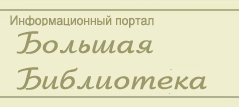Другое : Asteroids
Asteroids
Asteroids
Quick quiz: How many planets orbit
our Sun? If you said nine, you're shy by several thousand. Scientists consider
asteroids to be minor planets - some are hundreds of miles wide (and seldom
round).
Orbits
Most, but not all, orbit the sun in
an asteroid belt between Mars and Jupiter. The huge gravitational pull of
Jupiter accelerated these asteroids to more than three miles per second -- too
fast to prevent violent collisions. Otherwise, they might have joined up to
form "real" planets. When asteroids collide, fragments sometimes are
sent on a collision course with Earth and become meteors.
Size and makeup
The vast majority of asteroids are
small, compared with a large one like Ida, this 32-mile-long chunk of stone and
iron that was photographed in 1993 by the Galileo spacecraft. Though we
normally think of asteroids as crater-makers, they are typically pockmarked
with their own impact craters.
Scientists divide asteroids into two
groups, based on how they appear in infrared images: light and dark. The
lightest-looking asteroids are rocky bodies with lots of iron and nickel, and
they resemble lunar rocks. The darkest asteroids have high quantities of
hydrated minerals and carbon. In the early days of the solar system (some 4.6
billion years ago) asteroids had metallic cores, middle regions of stone and
iron, and surfaces of stone. Over time, many of them collided with others and
broke apart. The fragments, which became many of today's asteroids, are therefore
classified as irons, stony-irons or stony.
When an asteroid, or a part of it,
crashes into Earth, it's called a meteorite.
Origin
There are two hypotheses about how
most of the asteroids formed.
One says they broke off of a mother
planet that existed between Mars and Jupiter. More likely, however, they
represent what space was like before the planets formed, and they are the
remnants of that process -- bits and pieces that never quite joined together.
The threat of
impact
Since the Earth was formed more than
four billion years ago, asteroids and comets have routinely slammed into the
planet. The most dangerous asteroids are extremely rare, according to NASA.
An asteroid capable of global
disaster would have to be more than a quarter-mile wide. Researchers have
estimated that such an impact would raise enough dust into the atmosphere to
effectively create a "nuclear winter," severely disrupting
agriculture around the world. Asteroids that large strike Earth only once every
1,000 centuries on average, NASA officials say.
Smaller asteroids that are believed
to strike Earth every 1,000 to 10,000 years could destroy a city or cause
devastating tsunamis.
More than 160 asteroids have been
classified as "potentially hazardous" by the scientists who track
them. Some of these, whose orbits come close enough to Earth, could potentially
be perturbed in the distant future and sent on a collision course with our
planet.
Scientists point out that if an
asteroid is found to be on a collision course with Earth 30 or 40 years down
the road, there is time to react.
Though the technology would have to
be developed, possibilities include exploding the object or diverting it.
For every known asteroid, however,
there are many that have not been spotted, and shorter reaction times could
prove more threatening. NASA puts the odds at 1 in 10,000 of discovering an
asteroid that is within 10 years of impact.
Two programs have been set up to
actively search for Near-Earth Objects (NEO's): NASA's Near Earth Asteroid Tracking
(NEAT) program, and Spacewatch at the University of Arizona.
Also, the Spaceguard Foundation was
established in 1996 in Rome. The international organization's goal is to
protect Earth from the impacts by promoting and coordinating discovery programs
and studies of NEOs. A January report shows that NEOs 1 kilometer or larger are
being discovered at the rate of about five a month. The combined goal of these agencies
is to find 90 percent of all NEOs 1 kilometer or larger within the next decade.
Список литературы
Для
подготовки данной работы были использованы материалы с сайта http://englishtopic.narod.ru/
|


